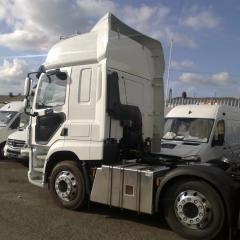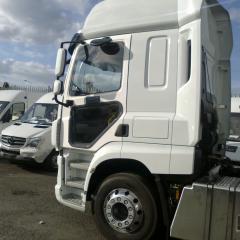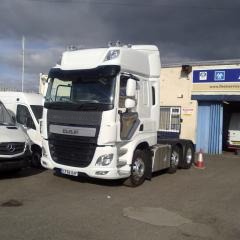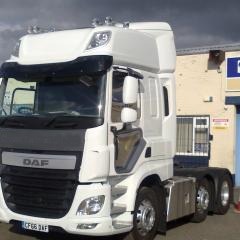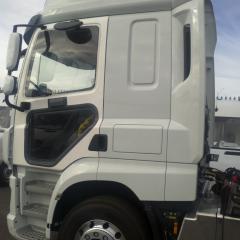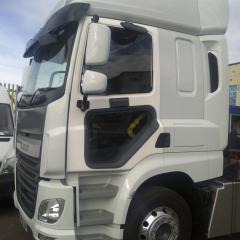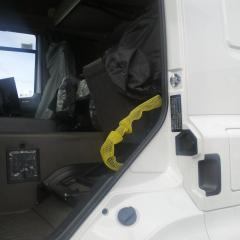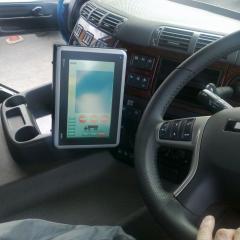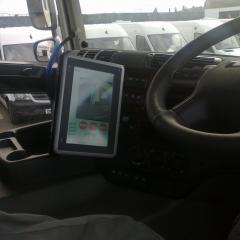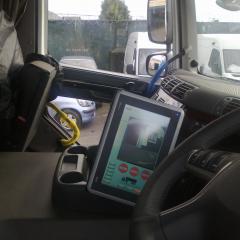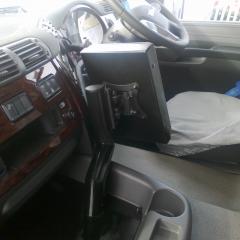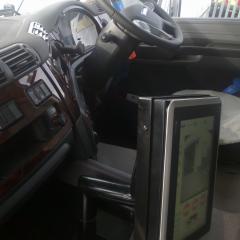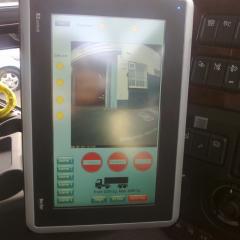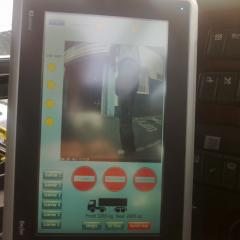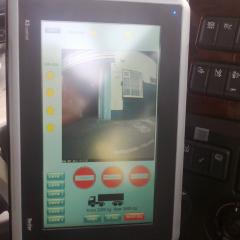A solution to problems of cyclist protection, reverse camera imaging, vehicle axle weight indication and telematic integration.
Case Study: Daf Vision Project
Background
Fleet Service Ltd (FSL) was asked by a client to provide a solution to resolve the issue regarding cyclist protection, reverse camera imaging, vehicle axle weight indication and telematic integration.Due to the demand in the industry for ever increasing protection systems being fitted with traceability for vehicles and drivers, the number of information screens present on or around the dash board are on a modern-day truck for example a tipper truck is becoming an issue in relation to which screen supplies which information. It has also been considered as a potential Health and Safety issue in relation to the drivers view of the road.
As each of these systems is added to a vehicle so is additional wiring. This can cause interference issues if the in correct or unshielded cabling is used. The sample vehicle was presented to Fleet Service for development purposes and to re-verse engineer to allow only one screen to installed.
The vehicle that was presented had already been fitted with a modified n/s cab door which due to its enlarged glazed area provided better driver visibility around the n/s step area of the vehicle. (the cyclist danger area). Integrated into this window was a wash, wiper to keep the window clean, a secondary turn signal indicator and a night time down light unit.
Challenges
Fleet Service was required to reverse engineer the data received from the Cyclist protection system, reverse camera system, axle weight indication system and vehicle telematics systemSystem development
One main consideration in the early stages of development was which manufacture for electronic hardware was to be used. Due to the up-scalability at a relatively low cost it was decided to use Beijer electronics for this project. The main single information screen that would used was human machine interface (HMI). This is an industrial type information screen which is designed to provide longevity of service.It was decided that due to restriction and availability of space in and around the cab, that the best location for the single information screen (HMI) would be mounted adjacent the driver in a housing which had the facility if required to be swung 180 degrees towards the passenger seat.
System Panel Development
This was designed as a single unit for this specific project. The panel encompassed all of the main crevice’s I/O cards, CCTV image interface units and various other electronic units to be integrated.Programme Development
The programme required had to incorporate the N/S can image camera, side vehicle sensor identification and the vehicles current axle weights.Additional Features
If the vehicle was in a parked state the vehicle would then have the function to switch to page 2 of the HMI which was were the information was provided to the driver when he was loading his vehicle to ensure legal compliance whilst at the same time maximising the payload he had available to him.Should for any reason the driver overload any of the axles a warning message was provide which also showed the driver which axle was over its permitted weight. The n/s door additional features, wash wipe and down light were controlled by the HMI. When the vehicle was in motion should a cyclist try to move down the inside of the vehicle a buzzer was activated in the cab to warn the driver to look at the HMI to check the position of the cyclist.
The HMI had the facility to take a smart media card or flash card. Both of these storage devices allowed for a certain amount of CCTV footage to be recorded which, could be downloaded at a later time should the need arise.

